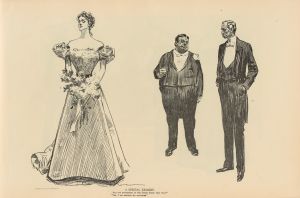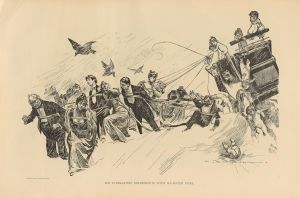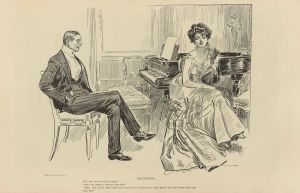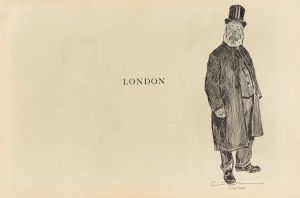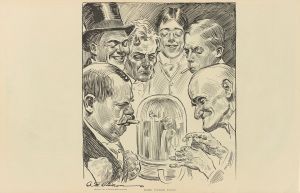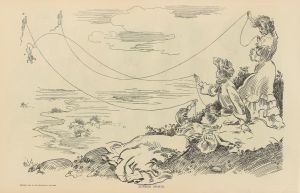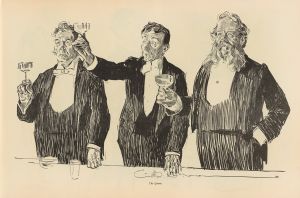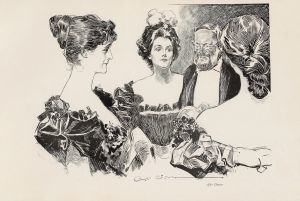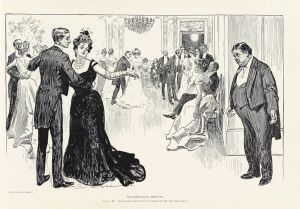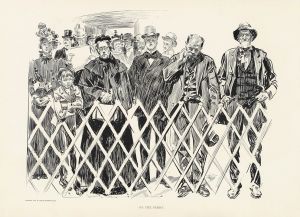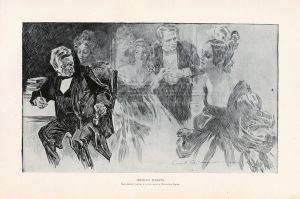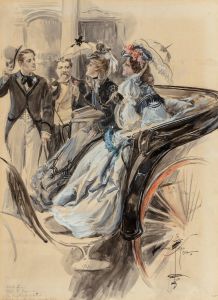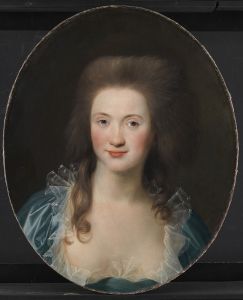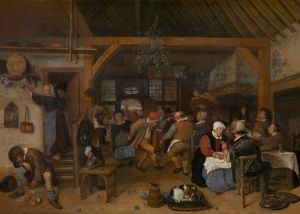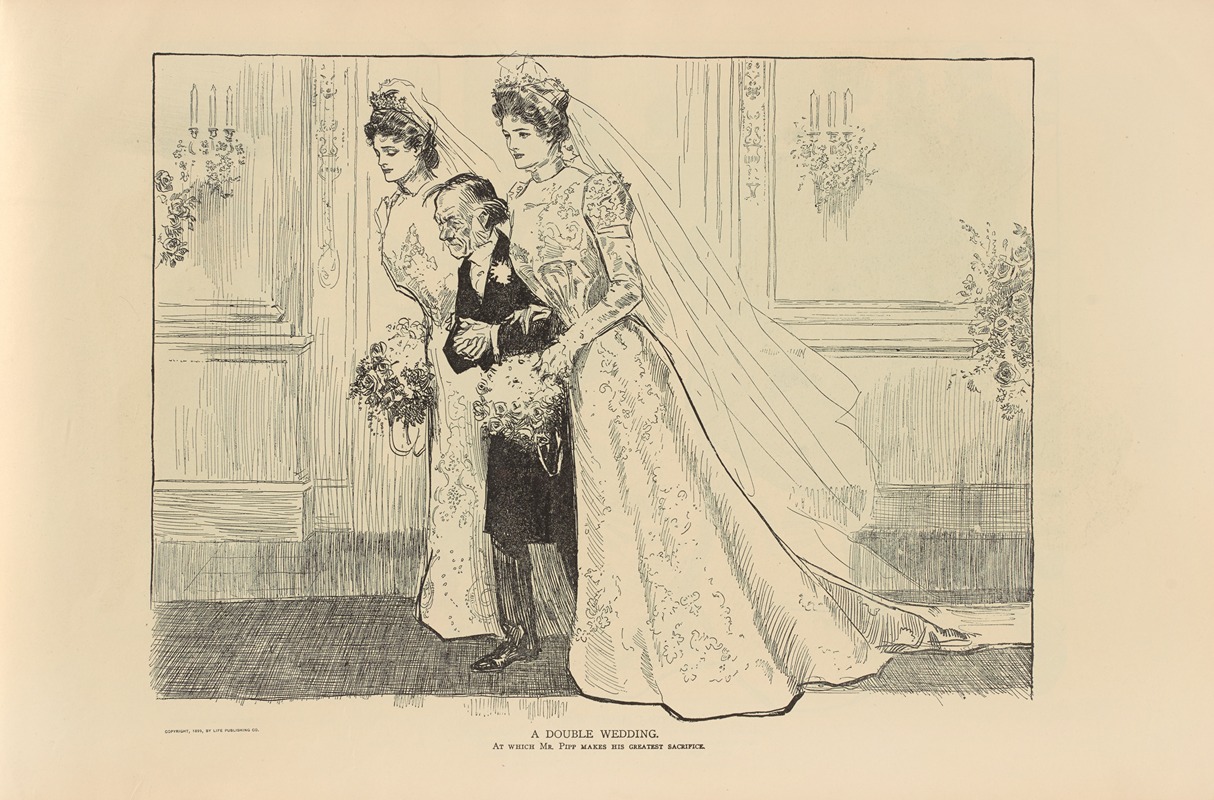
A double wedding
A hand-painted replica of Charles Dana Gibson’s masterpiece A double wedding, meticulously crafted by professional artists to capture the true essence of the original. Each piece is created with museum-quality canvas and rare mineral pigments, carefully painted by experienced artists with delicate brushstrokes and rich, layered colors to perfectly recreate the texture of the original artwork. Unlike machine-printed reproductions, this hand-painted version brings the painting to life, infused with the artist’s emotions and skill in every stroke. Whether for personal collection or home decoration, it instantly elevates the artistic atmosphere of any space.
Charles Dana Gibson was an influential American illustrator, best known for his creation of the "Gibson Girl," a representation of the idealized American woman at the turn of the 20th century. Among his numerous works, "A Double Wedding" is one of the illustrations that showcases his distinctive style and social commentary.
"A Double Wedding" is a black and white illustration that captures a moment of social interaction and cultural norms of the late 19th and early 20th centuries. Gibson's work often depicted scenes of upper-middle-class society, and this illustration is no exception. The artwork portrays two couples, presumably engaged in a double wedding ceremony, a concept where two couples are married in a single ceremony. This setting provides a glimpse into the social customs and fashion of the era.
Gibson's illustrations were characterized by their detailed line work and the ability to convey complex social dynamics with subtle humor and satire. "A Double Wedding" is a testament to his skill in capturing the nuances of human interaction and the societal expectations of his time. The characters in the illustration are elegantly dressed, reflecting the fashion trends of the early 1900s, with the women likely embodying the "Gibson Girl" archetype—confident, independent, and stylish.
The "Gibson Girl" was more than just a fashion icon; she represented a shift in societal attitudes towards women. She was depicted as being educated, athletic, and socially active, which was a departure from the more traditional and domestic roles women were expected to play. In "A Double Wedding," the female characters might embody these traits, showcasing Gibson's influence on the perception of women during this period.
Gibson's work was widely published in popular magazines of the time, such as Life, Harper's Weekly, and Scribner's, making his illustrations accessible to a broad audience. His ability to capture the essence of American society with wit and elegance contributed to his popularity and the enduring legacy of his work.
While specific details about "A Double Wedding" are limited, the illustration fits within the broader context of Gibson's oeuvre, which often explored themes of romance, social status, and the changing roles of men and women. His illustrations were not just artistic expressions but also social commentaries that offered insights into the cultural landscape of his era.
In summary, "A Double Wedding" by Charles Dana Gibson is an illustration that exemplifies the artist's talent for depicting the social customs and fashion of the early 20th century. Through his work, Gibson provided a window into the lives of the upper-middle-class society and contributed to the evolving portrayal of women during a time of significant social change.





